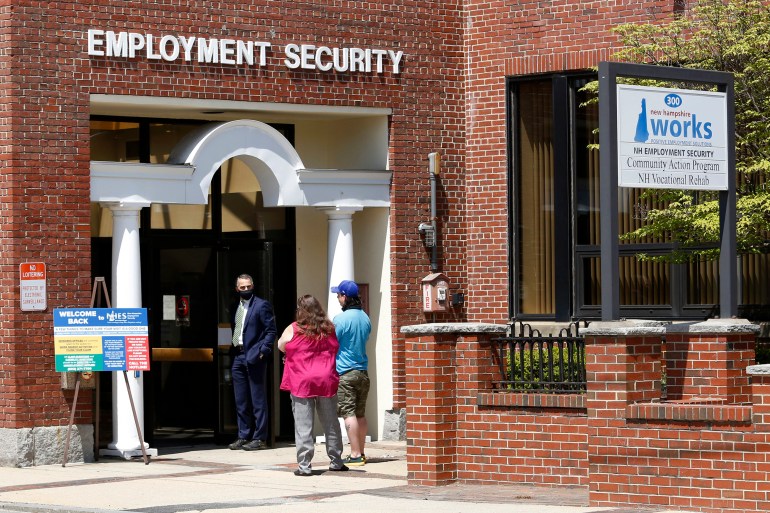US jobless rate rose last week, but demand for workers still high
The number of Americans filing new claims for unemployment benefits increased to the highest level in nearly five months last week, but the total number of Americans collecting unemployment remains at a 52-year low.
Applications for unemployment benefits rose by 27,000 to 229,000 for the week ending June 4, the most since mid-January, the Labor Department reported on Thursday. First-time applications generally track the number of layoffs.
The four-week average for claims, which evens out some of the weekly volatility, rose by 8,000 from the previous week to 215,000.
The total number of Americans collecting jobless benefits for the week ending May 28 remained unchanged from the previous week at 1,306,000 – the fewest since January 10, 1970.
“Widespread difficulties in hiring workers are still discouraging businesses from laying off workers, but pockets of weakness have emerged among some tech startups as well as retailers which have felt the impact from a shift in consumer spending from goods to services,” said Dante DeAntonio, a senior economist at Moody’s Analytics in West Chester, Pennsylvania.

The data comes as American workers are enjoying historically strong job security two years after the coronavirus pandemic plunged the economy into a short but devastating recession.
Weekly applications for unemployment aid have been consistently below the pre-pandemic level of 225,000 for most of 2022, even as the overall economy contracted in the first quarter and concerns over inflation persist.
Last week, the government reported that US employers added 390,000 jobs in May, extending a streak of solid hiring that has bolstered an economy under pressure from high inflation and rising interest rates.
Last month’s gain reflects a resilient job market that has so far shrugged off concerns that the economy will weaken in the coming months as the Federal Reserve steadily raises interest rates to fight inflation. The unemployment rate remained 3.6 percent, just above a half-century low.
The new data also comes amid reports of companies freezing hiring or contemplating layoffs in anticipation of a recession next year. Overall demand for labour, however, remains strong, with 11.4 million job openings at the end of April.
The data included the Memorial Day holiday. The seasonal factors, the model that the government uses to strip out seasonal fluctuations from the data, had expected a 21,362 drop in unadjusted claims, as hiring typically increases in summer.
But with worker shortages rampant, there is limited room for big decreases and unadjusted claims are already at very low levels.

Unadjusted claims edged up 1,008 to 184,604 last week. There were notable increases in applications in Florida, Georgia and Pennsylvania, which offset declines in Mississippi and Michigan.
“This means that the recent increases in the seasonally adjusted data have occurred because the underlying level of filings has not moved down by as much as the seasonal factors anticipated, but not because of an actual increase in the real-world level of filings,” said Daniel Silver, an economist at JPMorgan in New York.
“We also should keep in mind that the data can be noisy from week to week and particularly noisy around holidays like Memorial Day.”
Meanwhile, inflation at the consumer level eased slightly in April after months of relentless increases but remained near a 40-year high.
Consumer prices jumped 8.3 percent last month from a year ago, just below the 8.5 percent year-over-year surge in March, which was the highest since 1981.
Earlier in May, the Federal Reserve intensified its fight against inflation by raising its benchmark short-term interest rate by a half-percentage point, signaling further large rate hikes to come.
The Federal Reserve meets again next week.




